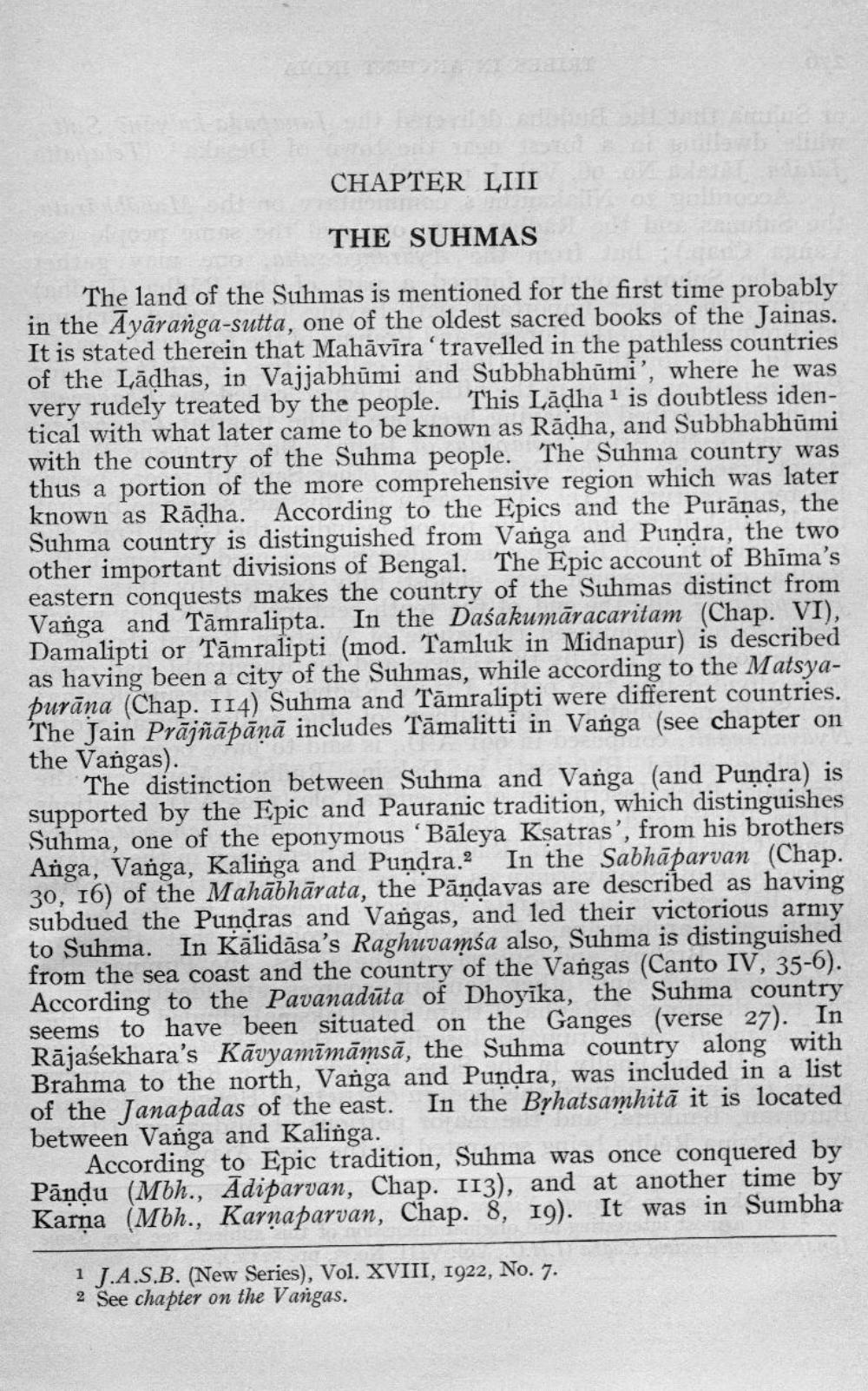________________
CHAPTER LIII
THE SUHMAS
The land of the Suhmas is mentioned for the first time probably in the Ayāranga-sutta, one of the oldest sacred books of the Jainas. It is stated therein that Mahāvīra 'travelled in the pathless countries of the Lādhas, in Vajjabhūmi and Subbhabhūmi', where he was very rudely treated by the people. This Lādha 1 is doubtless identical with what later came to be known as Rādha, and Subbhabhūmi with the country of the Suhma people. The Suhma country was thus a portion of the more comprehensive region which was later known as Rādha. According to the Epics and the Purāņas, the Suhma country is distinguished from Vanga and Pundra, the two other important divisions of Bengal. The Epic account of Bhima's eastern conquests makes the country of the Suhmas distinct from Vanga and Tāmralipta. In the Daśakumāracaritam (Chap. VI), Damalipti or Tāmralipti (mod. Tamluk in Midnapur) is described as having been a city of the Suhmas, while according to the Matsyapurāna (Chap. 114) Suhma and Tāmralipti were different countries. The Jain Prājñāpānā includes Tāmalitti in Vanga (see chapter on the Vangas).
The distinction between Suhma and Vanga (and Pundra) is supported by the Epic and Pauranic tradition, which distinguishes Suhma, one of the eponymous 'Bāleya Kşatras’, from his brothers Anga, Vanga, Kalinga and Pundra.2 In the Sabhāparvan (Chap. 30, 16) of the Mahābhārata, the Pāndavas are described as having subdued the Pundras and Vangas, and led their victorious army to Suhma. In Kalidāsa's Raghuvamsa also, Suhma is distinguished from the sea coast and the country of the Vargas (Canto IV, 35-6). According to the Pavanadūta of Dhoyīka, the Suhma country seems to have been situated on the Ganges (verse 27). In Rājasekhara's Kāvyamīmāmsā, the Suhma country along with Brahma to the north, Vanga and Pundra, was included in a list of the Janapadas of the east. In the Byhatsamhitā it is located between Vanga and Kalinga.
According to Epic tradition, Suhma was once conquered by Pāņdu (Mbh., Ādiparvan, Chap. 113), and at another time by Karna (Mbh., Karnaparvan, Chap. 8, 19). It was in Sumbha
1 J.A.S.B. (New Series), Vol. XVIII, 1922, No. 7. 2 See chapter on the Vangas.




